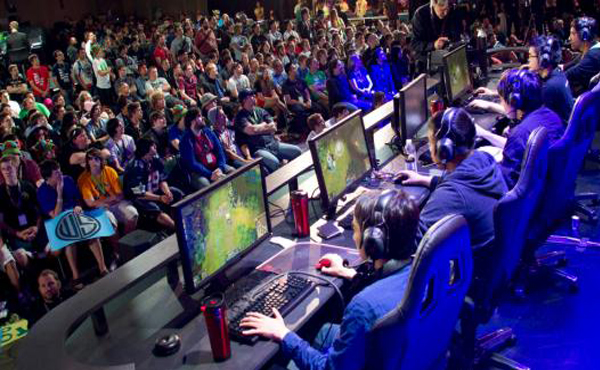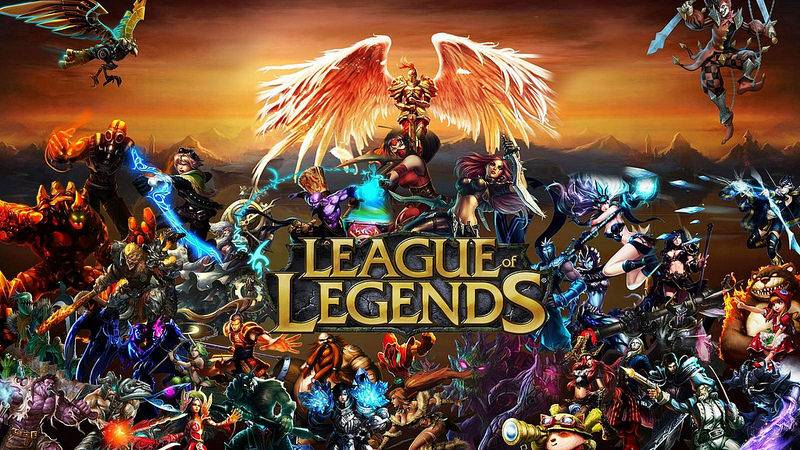Rise of eSports Calls for New Tech Solutions

The lights of the stadium dim. The contestants are announced. Thousands of fans scream in the arena. Wagers are placed in person and online. The match is about to begin.
No, we are not describing UFC or boxing or any other physical sporting competition. When the contestants take their places, it is in front of their computer screens. As play begins, fans breathlessly watch the virtual action of League of Legends, Call of Duty, Dota 2, or Starcraft II on massive screens.
Technically eSports are nothing new. In fact, gaming professionals have been playing for the big bucks since the 1990s. But back then, pro gaming was very much a niche interest. Outside of geek circles, most people didn’t even know it existed. (There's nothing wrong with geeks; we love them!)
It wasn’t until Starcraft II was released by Blizzard in 2010 that eSports started to really gain traction. Since then, it has grown by leaps and bounds. Now it is more than just a household word—it is a global phenomenon.
Just How Popular Are eSports?

SuperData Research has conducted a lot of research on eSports. Here are just a few of their astounding findings:
-
In 2013, 32 million people watched the League of Legends Season 3 World Championship. For comparison, only 26.3 million people watched the NBA Finals, and only 14.9 million people watched the MLB World Series.
-
What does that represent in terms of revenue? Global revenue worldwide for eSports has already totaled to $892.8 million this year, which is up 19% from last year. Asia is in the lead with revenue, followed by North America and Europe.
As you might guess, the pros that win these gaming tournaments come out ahead with substantial sums of money—hundreds of thousands of dollars for Major League Gaming (MLG) competitions and other big tournaments.
New eSports Stadiums and Training Centers Are Going Up Around the World (And They Need to Manage A Lot of Cables)
You might be tempted to think of eSports as a largely “online” phenomenon, but the offline aspects are essential. While many fans stream eSports tournaments on the web, many others enjoy attending the big matches in person. This necessitates the construction of large-scale stadiums which can hold thousands of fans.
Plus, professional and college eSports teams need somewhere to train, which means that team training centers need to be constructed as well.
As one prominent example just this year, venture capital firm SierraMaya360 received a 7-figure deal to construct the largest eSports training facility in the world in Charlotte, North Carolina.
Once the facility is completed, it will attract players from countries around the globe. This would allow the Electronic Sports League (ESL) to potentially host a major tournament in Charlotte every year, which would be a massive boon to the economy. Tickets for events like these start at around $45 and may range into the thousands of dollars for VIP seats. It isn’t uncommon for up to 20,000 people to attend an event. This could result in millions of dollars in revenue for Charlotte every year.

eSports Poses Unique Technical Challenges
While eSports arenas and training centers can draw significant revenue to host cities, they do pose a number of construction and networking challenges for builders.
Consider the University of California, Irvine. UCI has its own League of Legends Team and has just constructed a 3,500 square foot eSports arena. That arena contains a total of 80 high-tech gaming PCs, not to mention a webcasting studio and massive screens for the audience.
Just think about the sheer number of cables required to hook up all those power-hungry gaming rigs, not to mention the modems, routers, and servers needed to live-stream the events, and all the cables for the viewing screens.
Left exposed, all those cables pose a serious tripping hazard for contestants and staff. They are also quite an eyesore.
Think of those wires and cables, and the different ways to manage those cables.
This means that builders of eSports stadiums and training centers are turning to cable management access floors to keep all these wires out of sight and prevent slips and falls.

The Future of eSports
As eSports continues to grow at a breakneck pace, the need for unique technical solutions like cable access floors will continue to grow as well. If eSports proceeds along its projected growth curve, by the end of 2019, a global audience of 303 million fans will be filling stadiums and live streaming matches online.
Why is eSports such a sensation? Perhaps Mark Deppe, UCI’s Acting Director of eSports explains it best: “It transcends language, geography, race, age, religion, gender identity, sexual orientation, physical ability, and many other identities.”
In other words, eSports may just be the most inclusive form of competition ever. And that is why it is, in Deppe’s words, “The future of competition. Period.”
Access Floor,
Cable Management,
eSports





 Facebook
Facebook Twitter
Twitter Google+
Google+ LinkedIn
LinkedIn